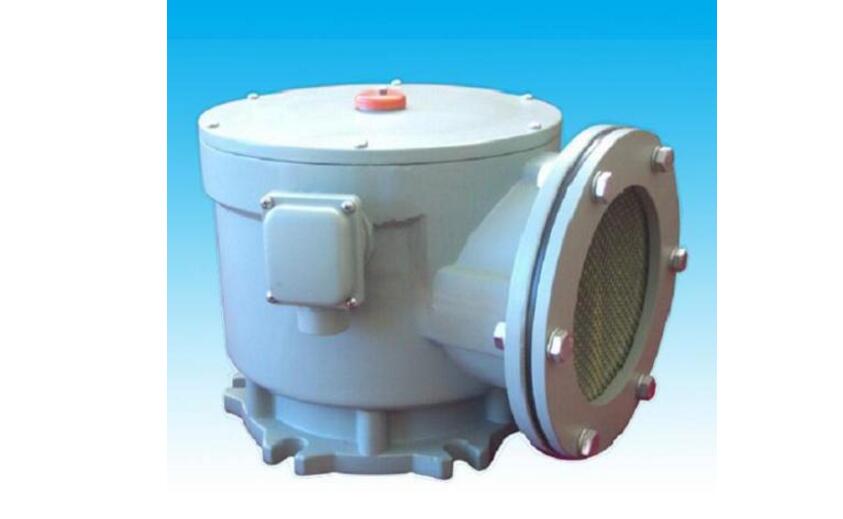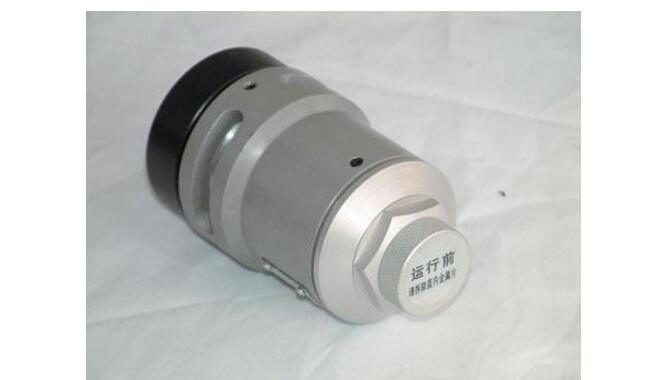The pressure relief valve is also known as the Ash Library Release Valve or the Ash Library Vacuum Release Valve. Arranged at the top of the ash storage tank to protect the ash storage from excessive positive pressure and negative pressure when the ash storage intake, exhaust overpressure and abnormal temperature changes. The pressure vacuum relief valve is installed at the top of the ash store. When the back pressure of the ash store is too high or the negative pressure is too high, it can act in time and adjust the working pressure of the dry ash store within the normal range so that the ash store can not bear high positive pressure or negative pressure so as to ensure the safety of the ash store. The valve is characterized by reliable operation, tight sealing and long service life. It is an indispensable important equipment in the ash storage system.
Pressure relief valve use performanceThe pressure relief valve is arranged in a sealed hopper, such as an ash storage, a limestone silo, and a granary. When the pressure in the silo is not normal, the pressure and temperature inside the silo are automatically adjusted to protect the silo from excessive or too low pressure. .
Pressure relief valve is a kind of pressure protection device of transformer. When a fault occurs inside the transformer, a large amount of gas is generated due to the decomposition of the oil. Since the transformer is basically closed, the connecting pipe connecting the oil pillow is fine, and the pressure of the fuel tank is drastically increased because the pressure of the fuel tank cannot be reduced quickly only by the small connecting pipe. Causes the transformer tank to break. The pressure relief valve will be opened in time to remove some of the transformer oil and reduce the pressure in the mailbox. After the pressure in the tank is reduced, the pressure relief valve will automatically close and maintain the seal of the fuel tank.

Pressure relief valve structure shown in Figure 1. The opening pressure, closing pressure, opening time and release diameter of the pressure release valve are the main characteristic parameters. These parameters determine the dynamic characteristics of the pressure release valve and provide a basis for the correct selection of the pressure release valve.

Figure 1 Pressure relief valve structure
1-Flange mounting; 2-Sealing; 3-diaphragm plate; 4-Sealing pad;5-Sealing pad; 6-Housing; 7-Spring; 8-action indicating lever;
9-Alarm switch; 10-hand push reset lever; 11-bolt; 12-bolt; 13-bushing; 14-vent plug; 15-lift flagpole
The opening pressure refers to the inlet pressure of the diaphragm plate when the diaphragm of the release valve jumps and the oil is continuously discharged. When a fault occurs inside the OLTC oil chamber, the pressure rises sharply, and the pressure on the release valve diaphragm reaches or exceeds the opening pressure, and the diaphragm opening time should not exceed 2 ms. After the release valve with the mechanical signal mark is turned on, the marker rod should obviously move. When the release valve is closed, the marker should remain in the open position and then manually reset. Signal contacts equipped with signal switches shall be reliably switched and self-locked and then manually reset.
Closing pressure refers to the inlet pressure to which the membrane disk is subjected when the membrane disk of the release valve re-contacts the valve seat or the opening height is zero, ie, the pressure at which the leakage through the sealing device stops. The closing pressure is approximately half the opening pressure. During normal OLTC operation, the working pressure inside the oil chamber should not exceed the closing pressure of the release valve. Otherwise, the pressure release of the pressure release valve may proceed slowly, and a squeaking sound of “嘶嘶†will be emitted. At this time, the action indicator rod will be slightly raised and the flagstick or alarm switch may not work.
OLTC pressure relief valve selection:
The pressure relief valve is selected according to the opening pressure parameters, the OLTC oil chamber configuration safety protection characteristics and the three principles of comparison with the same foreign OLTC. The pressure release valve setting pressure release value is shown in Table 2.

Table 2 Pressure release valve setting pressure release value selection
Pressure release valve opening pressure should not be selected too small, opening pressure should not be less than 55kPa: One does not match the sealing pressure of the oil chamber; two pressure relief valve may be opened by mistake, resulting in oil leakage; three OLTC normal switching It is easy to malfunction (helium fuel injection or signal alarm).
Pressure relief valve worksThe pressure relief valve is bolted to the top of the transformer tank. The sealing gasket seal ensures that the insulating oil does not leak. Inside the pressure relief valve, pressure is mainly applied to the diaphragm by two springs. The diaphragm is sealed by two sealing rings.
When a fault occurs inside the transformer, when a large amount of gas is generated, when the pressure of the insulating oil on the diaphragm plate is greater than the spring pressure, the transformer oil is discharged when the opening pressure is reached, and the internal pressure of the transformer is rapidly reduced to a normal value. The membrane disk is returned to its original position by the pressure of the spring, and the opening time of the pressure relief valve is not more than 2ms.
When valve pressure is released: When the pressure in the silo or ash store increases to the pressure value selected by the valve, the pressure in the chamber overcomes the weight of the seat cover, lifts the valve cover from the valve seat, and the pressure is released until the silo or When the pressure in the ash tank drops to the same value as the value selected by the valve, the valve cap returns to its normal position.
When valve vacuum is released: When the pressure in the silo or ash store is lower than atmospheric pressure, a vacuum is generated in the silo or ash store. When the vacuum value drops to the vacuum value selected by the valve, atmospheric pressure acts on the diaphragm. The vacuum ring is moved to the floating position where the air enters the silo or ash store until the internal vacuum is less than the selected value, the vacuum ring returns to its normal position against the diaphragm.

1, protection principle
In order to improve the operational reliability of the equipment, large-scale power transformers put into operation in the early stages gradually replaced the safety air ducts (explosion-proof tubes) of the transformers with pressure relief valves. As a non-electrical protection transformer safety device, the pressure relief valve is used to protect the oil-immersed electrical equipment. When a fault occurs inside the transformer tank, the oil in the tank is decomposed and gasified, generating a large amount of gas, and the pressure in the fuel tank is drastic If the pressure is not released in time, the transformer tank will be deformed or even burst. When the pressure relief valve is installed to make the transformer malfunction inside the tank and the pressure rises to the opening pressure of the pressure release valve, the pressure release valve opens quickly within 2ms, so that the pressure in the transformer tank is rapidly reduced. When the pressure is reduced to the closing pressure value, the pressure release valve is reliably closed, so that the positive pressure is always maintained in the transformer tank, effectively preventing external air, moisture and other impurities from entering the tank, and there is no component damage after operation, no need to replace, etc. Currently, it has been widely used.
2, set the principles and operational requirements
The opening pressure of the pressure relief valve should be considered in consideration of the structural considerations of the transformer. The difference between the elevated seat and the top of the oil tank and the difference between the heart type transformer and the shell type transformer should be distinguished. Blindly reducing the opening pressure will easily cause pressure release. If the valve protection malfunctions, the micro-switch of the pressure release valve will be tripped due to dampness or vibration, and tripping must be avoided as far as possible. As most transformer manufacturers regulate pressure release
The valve contact acts on the trip and has repeatedly caused tripping and blackout due to the reduction of the secondary circuit insulation of the pressure release valve. For this reason, the Transformer Operation Procedure (DL/T572--95) states that “Pressure relief valve contacts should act on signalsâ€. However, when the pressure release valve operates and the transformer does not trip, it may cause the transformer to run out of oil and cause the fault to expand. For this purpose, a double float's gas relay can be used to protect the transformer: When the pressure release valve is actuated and the oil level is too low, the lower float of the gas relay turns on and sends a trip signal.
51V Battery Pack,Portable Battery Box,Portable Battery Bank,Ac Battery Pack
Zhejiang Casnovo Materials Co., Ltd. , https://www.casnovonewenergy.com